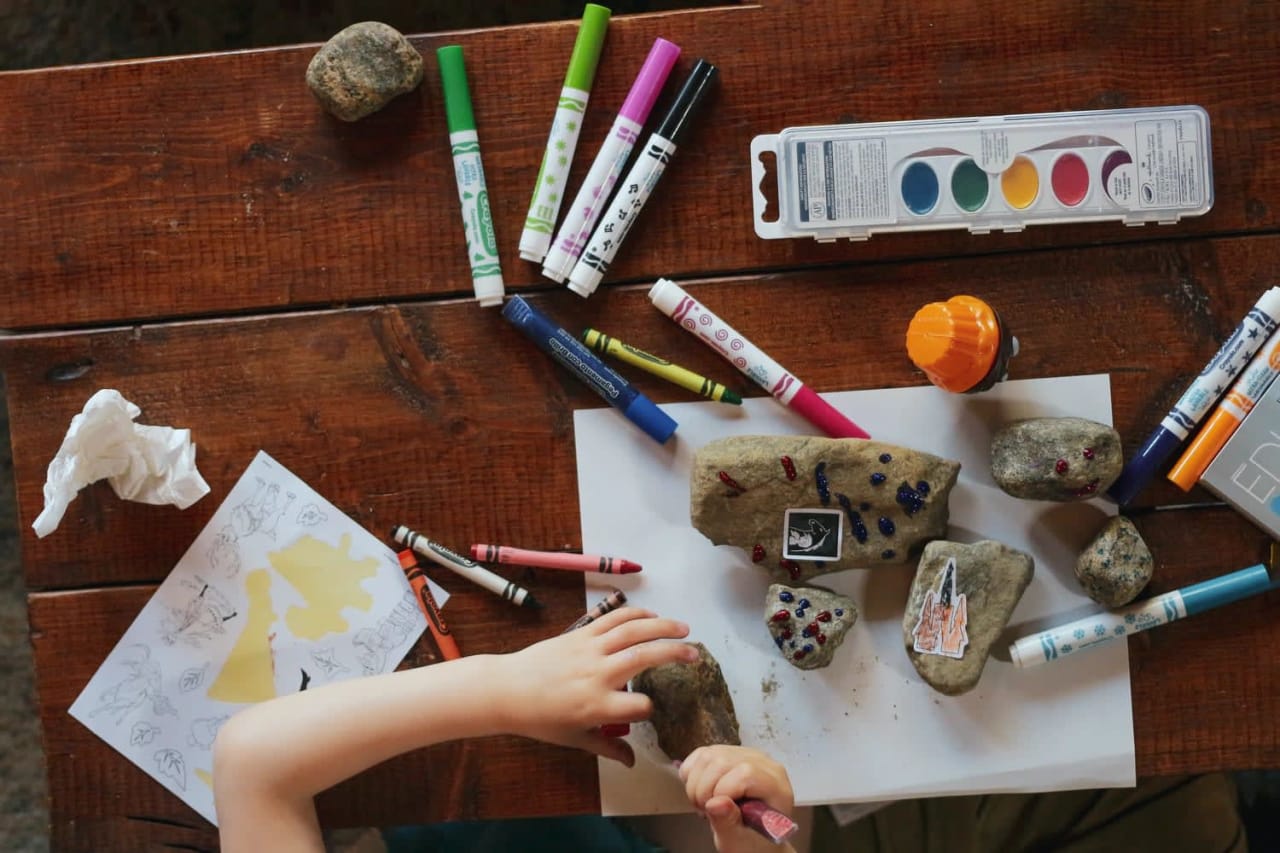Moving the classroom home for virtual learning can be a challenging obstacle for students and parents alike. To make the most of this unprecedented situation and lay the foundation for success in the at-home classroom, try these ten tips.
Getting Started
If you’ve never tackled virtual learning before, the premise can sound intimidating. Luckily, there are a few steps you can take to start on the right foot. Here are six key components for future success while engaging in distanced education.
1. Establish a Routine
Routines are a powerful tool for establishing expectations. At school, a child is likely used to the routine of catching the school bus, setting up their desk space, and moving through lessons until lunch and recess. Similarly, you can put routines in place at home to help students adjust to learning in a new environment. Morning routines particularly cultivate a sense of normalcy. Try waking up at the same time each school day and enjoying a healthy breakfast before launching into virtual learning.
2. Designate a Workspace
No matter how much space you have to work with, creating differentiated work and play areas for your student can be vital to their success. Without this separation, students may be more prone to distraction because they associate their workspace with recreation rather than education. Creating a designated workspace could mean something as small as dedicating a particular seat in the house as a learning chair or something as large-scale as turning a bonus room into an education station.
3. Make a Schedule

Planning for the week makes expectations clear, which ultimately sets the student up for success. Because you’re likely juggling a slew of other responsibilities around the house, crafting a schedule will keep everything on track. Both you and your student will reap the benefits of planning ahead of time. Keep your family’s schedule posted in a high-traffic location such as the kitchen so that everyone can see it.
4. Enable Online Parameters
Kids are spending more time than ever using the internet, so protecting your student online has become even more important. Cyber-security becomes imperative when your student participates in online learning. Additionally, you’ll want to limit distractions by restricting access to non-educational sites during class times.
5. Open Communication
Remember that this is a learning experience for everyone. Discuss triumphs and tribulations with your student to help them discover areas where they are excelling and areas where you can help them succeed. Additionally, reach out to your student’s educators for feedback on their work to ensure that they are reaching their desired milestones. Open communication allows adjustments to be made to cultivate a learning environment that works for everyone.
6. Don’t Do — Help
As a parent, you’re used to guiding your child, teaching them what they need to know, and always being nearby to lend a helping hand. However, when your student is participating in virtual learning, you’ll find that you often have to take a backseat. While your gut instinct might be to offer your child as much help as possible, it’s important to allow them the space they need to learn on their own.
Practice staying engaged in your student’s life without overstepping boundaries with their educator. Each student requires different types of assistance, so it’s important to honestly communicate with your student so that you can learn how to best offer them your help. Resist the urge to walk through all of their practice math problems for them, but stay nearby so that you can offer encouragement and assistance when necessary.
Support for Young Learners
Helping your little ones succeed while virtual learning requires flexibility, resilience, and patience. Here are a few important tips for making the most of a socially-distanced learning environment.
7. Be Interactive
As a parent, your involvement with your student’s learning is imperative for their success. Ask questions about your child’s day — what they’re learning about, what projects they’re working on, and what comes next — to encourage students to actively participate in their education and show them that you’re interested in what they’re being taught during school. Children often mimic their superiors, so acting as a responsible, engaged role model creates a positive social response.
8. Schedule Recess

Don’t overlook the necessity of recess. Play is one of the most effective tools for children to learn problem-solving, risk assessment, and critical thinking skills. While your child may not be able to engage in play with other students right now, you can incorporate activities such as puppet shows, painting, and storytime into your play routine for an easy and effective way to encourage empathy and emotional growth. During virtual learning, recessing for playtime allows students to burn off energy to better focus in the classroom.
9. Plan for Transitions
Between Zoom sessions, your student will likely experience some downtime. Utilize these periods to the best of your ability by offering healthy snacks, engaging in a short storytime, or giving them an opportunity to play independently before returning to class. Without a plan, your student might get swept up by distractions and have a harder time returning to the next learning session. Additionally, staying up to date with what your student is learning during class will allow you to plan activities that coordinate with their curriculum. Thematic crafts and related picture books are excellent transitional activities to keep your student engaged with the coursework in between sessions.
Tips for Teens
Positioning your teen for success during virtual learning is imperative for creating positive results. With college applications and decisions about the future looming in the distance, you’ll want to provide your teen with the support they need to reach their fullest potential.
10. Get Organized
Position your student for success by stocking up on the appropriate learning supplies. Binders, highlighters, pens, and pencils are all just as important to virtual learning as they are in a traditional classroom. Keeping your student organized will help them stay on track during their studies, which might be more difficult at home than at school.
11. Find a Study Buddy
Without the same social stimulation that your student would receive at school, they might begin to feel lonely at home. Help coordinate online study sessions with friends to help your child stay social and academically engaged. A study buddy is an excellent tool for encouraging participation in educational content in a fun and exciting way.
12. Establish Rules and Goals
Firm but loving expectations will help keep your teen on track. Remind your student that these unprecedented circumstances have not created a gap year and that their education is important. By reiterating the importance of their education, you’ll help your student feel more motivated to dedicate the necessary time and energy to class participation even when they’re primarily learning online.
Logging Off
One often-underestimated aspect of success with virtual learning is creating boundaries. Understanding how and when to log off when learning from home allows students time to recharge, work ahead, and maintain motivation.
13. Make Time for Homework

Without the obvious differentiation between school and home during virtual learning, your student might struggle to stay up to date with homework assignments at first. Setting aside a specific time for homework throughout the day can help your student recognize when they should be working on assigned tasks. Staying on top of assignments will keep your student from feeling bogged down and overwhelmed by work, as well as set them up for success for the next day at school.
14. Stay Active
Sitting at a computer all day takes a physical toll on your student’s body. Without releasing pent-up energy, it might make it difficult for them to focus, and a sedentary lifestyle might make them feel sluggish and disengaged. Encouraging exercise is a fantastic way to set your student up for success. Incorporating active games into your routine can inspire kinetic learning, and exercise can also release endorphins that help your student decompress after a long day at school. Some simple activities include taking a walk, playing frisbee, and throwing a living room dance party.
15. Don’t Forget Downtime
Virtual learning shouldn’t take over your student’s life. Encourage active hobbies for your student to engage with, spend time together as a family, and foster quiet time for introspective activities. By creating boundaries between school time and personal time, your student will have a chance to recharge before their next class.
Learning from home can be a positive experience for both you and your student if you take the necessary steps to inspire success. For student success, enrolling in an education system that fits their learning style is imperative, and there is a multitude of highly rated private schools in Greenwich, CT, to choose from. If you’re interested in learning more about Greenwich, CT homes for sale, contact me for more information.


